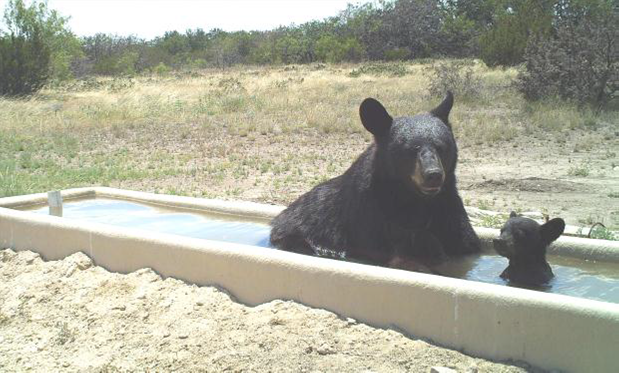Wildlife: Drought and the Return of the Black Bear
Tuesday, April 29th, 2014This is Passport to Texas
By the 1960s, the Mexican black bear disappeared from its historic range in Texas because of shooting, trapping and habitat loss. Over the past few years, though, we’ve seen its gradual return from across the border in Mexico.
16—You know, Mexico sustained some huge wildfires during the drought, and it destroyed a lot of habitat for bears, and sent a lot of the young ones and a lot of the – any of the hungry ones – on long walkabouts looking for food. And a certain number of those ended up in Texas.
When I asked Texas Parks and Wildlife mammalogist, Jonah Evans, whether the bears were here to stay, he said “it depends.”
33—Whether or not they’re here to stay depends on how good an area they’re able to find for food. So, if they find suitable habitat, they find good food resources, if they find a female – or if there is a female here for reproduction – then we could end up with potentially a couple of little pocket populations of bears in some remote ranches and stuff out in the Western Hill Country. And, you know, I suspect we have a few stragglers out in the Hill Country right now. Although, we haven’t had nearly the number of sightings in the last year that we had previously.
Do we need to be concerned for our safety with the return of black bears to Texas? We answer that question tomorrow.
The Wildlife and Sport Fish Restoration Program supports our series and funds diverse conservation projects in Texas. For Texas Parks and Wildlife, I’m Cecilia Nasti.



 Passport to Texas is a
Passport to Texas is a  Passport to Texas is made available by:
Passport to Texas is made available by: